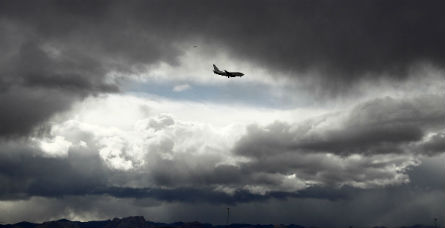Australian researchers are recommending that aircraft turbulence guidelines be rewritten after determining that thunderstorms can produce unexpected turbulence more than 100km (54nm) away from storm cells.
The study, conducted by the Centre of Excellence for Climate System Science and University of Melbourne researcher Todd Lane and funded by the Australian Research Council, highlights the impact of thunderstorms on a form of turbulence known as atmospheric gravity waves (see related story) that have so far not been taken into account by air safety guidelines.
"Previously it was thought turbulence outside of clouds was mostly caused by jet streams and changes in wind speed at differing altitudes - wind shear - but this research reveals thunderstorms play a more critical role," says Lane, pointing to effects including modifying airflow, strengthening the jet stream and enhancing wind shear at a significant distance from the storm cell.
 |
|---|
| Rex Features Stormy weather could need a new outlook, says Todd Lane |
According to the centre, around 15 people are injured every year as a result of turbulence and it costs the industry more than $100 million a year globally through re-routing and service checks. The US Federal Aviation Administration's guidelines for flying around thunderstorms are typical of those applied globally and do not include information on atmospheric wave processes.
However, says Lane: "We now know a lot more about how thunderstorms cause turbulence than we did when the guidelines were originally introduced. It is time to alter air turbulence guidelines in light of this knowledge and employ new technologies to forecast where it is likely to occur to improve air safety for all air travellers."
Lane reckons that better high-resolution atmospheric modelling could help: "Ten years ago, we didn't have the computing power and atmospheric models to answer some of the important questions around turbulence.
"Now we can answer some crucial questions but there are only a few groups working on this problem. We need more researchers to become engaged to improve the guidelines and passenger safety."
"We are working hard to develop new guidelines to recommend to the FAA that include a proper representation of the physics."
Source: Flight International























